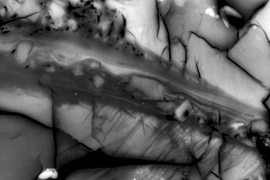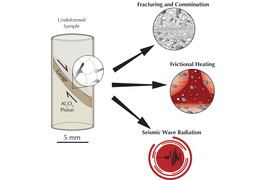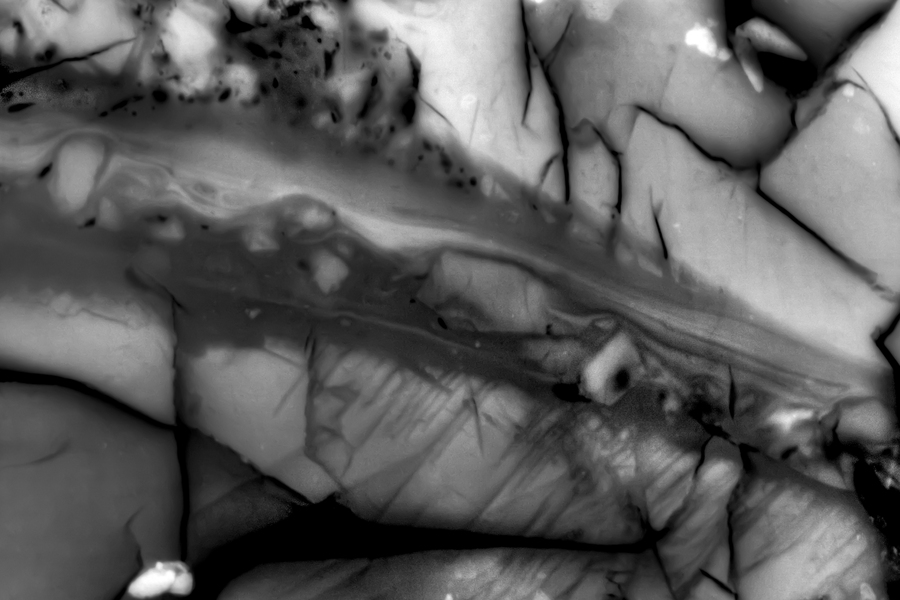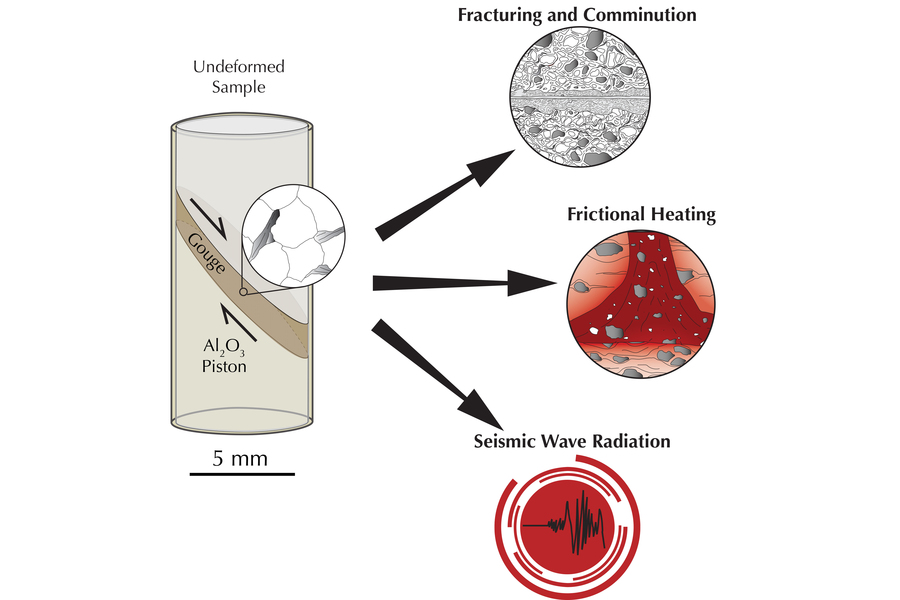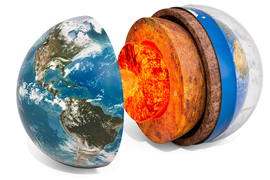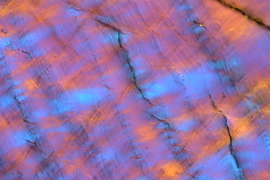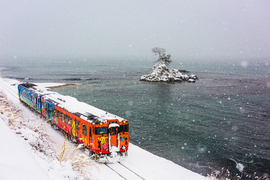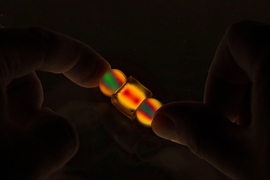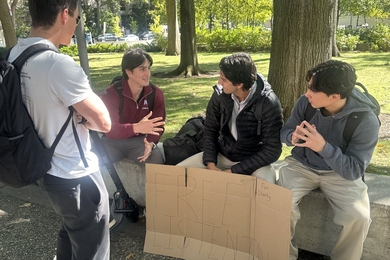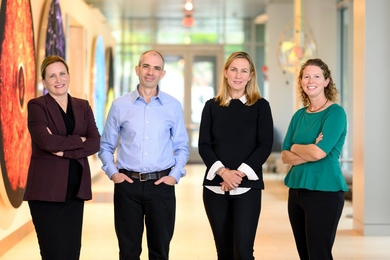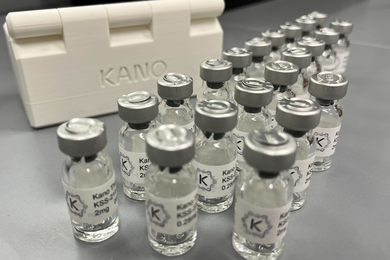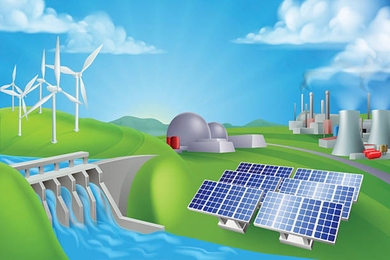Audio
The ground-shaking that an earthquake generates is only a fraction of the total energy that a quake releases. A quake can also generate a flash of heat, along with a domino-like fracturing of underground rocks. But exactly how much energy goes into each of these three processes is exceedingly difficult, if not impossible, to measure in the field.
Now MIT geologists have traced the energy that is released by “lab quakes” — miniature analogs of natural earthquakes that are carefully triggered in a controlled laboratory setting. For the first time, they have quantified the complete energy budget of such quakes, in terms of the fraction of energy that goes into heat, shaking, and fracturing.
They found that only about 10 percent of a lab quake’s energy causes physical shaking. An even smaller fraction — less than 1 percent — goes into breaking up rock and creating new surfaces. The overwhelming portion of a quake’s energy — on average 80 percent — goes into heating up the immediate region around a quake’s epicenter. In fact, the researchers observed that a lab quake can produce a temperature spike hot enough to melt surrounding material and turn it briefly into liquid melt.
The geologists also found that a quake’s energy budget depends on a region’s deformation history — the degree to which rocks have been shifted and disturbed by previous tectonic motions. The fractions of quake energy that produce heat, shaking, and rock fracturing can shift depending on what the region has experienced in the past.
“The deformation history — essentially what the rock remembers — really influences how destructive an earthquake could be,” says Daniel Ortega-Arroyo, a graduate student in MIT’s Department of Earth, Atmospheric and Planetary Sciences (EAPS). “That history affects a lot of the material properties in the rock, and it dictates to some degree how it is going to slip.”
The team’s lab quakes are a simplified analog of what occurs during a natural earthquake. Down the road, their results could help seismologists predict the likelihood of earthquakes in regions that are prone to seismic events. For instance, if scientists have an idea of how much shaking a quake generated in the past, they might be able to estimate the degree to which the quake’s energy also affected rocks deep underground by melting or breaking them apart. This in turn could reveal how much more or less vulnerable the region is to future quakes.
“We could never reproduce the complexity of the Earth, so we have to isolate the physics of what is happening, in these lab quakes,” says Matěj Peč, associate professor of geophysics at MIT. “We hope to understand these processes and try to extrapolate them to nature.”
Peč (pronounced “Peck”) and Ortega-Arroyo reported their results on Aug. 28 in the journal AGU Advances. Their MIT co-authors are Hoagy O’Ghaffari and Camilla Cattania, along with Zheng Gong and Roger Fu at Harvard University and Markus Ohl and Oliver Plümper at Utrecht University in the Netherlands.
Under the surface
Earthquakes are driven by energy that is stored up in rocks over millions of years. As tectonic plates slowly grind against each other, stress accumulates through the crust. When rocks are pushed past their material strength, they can suddenly slip along a narrow zone, creating a geologic fault. As rocks slip on either side of the fault, they produce seismic waves that ripple outward and upward.
We perceive an earthquake’s energy mainly in the form of ground shaking, which can be measured using seismometers and other ground-based instruments. But the other two major forms of a quake’s energy — heat and underground fracturing — are largely inaccessible with current technologies.
“Unlike the weather, where we can see daily patterns and measure a number of pertinent variables, it’s very hard to do that very deep in the Earth,” Ortega-Arroyo says. “We don’t know what’s happening to the rocks themselves, and the timescales over which earthquakes repeat within a fault zone are on the century-to-millenia timescales, making any sort of actionable forecast challenging.”
To get an idea of how an earthquake’s energy is partitioned, and how that energy budget might affect a region’s seismic risk, he and Peč went into the lab. Over the last seven years, Peč’s group at MIT has developed methods and instrumentation to simulate seismic events, at the microscale, in an effort to understand how earthquakes at the macroscale may play out.
“We are focusing on what’s happening on a really small scale, where we can control many aspects of failure and try to understand it before we can do any scaling to nature,” Ortega-Arroyo says.
Microshakes
For their new study, the team generated miniature lab quakes that simulate a seismic slipping of rocks along a fault zone. They worked with small samples of granite, which are representative of rocks in the seismogenic layer — the geologic region in the continental crust where earthquakes typically originate. They ground up the granite into a fine powder and mixed the crushed granite with a much finer powder of magnetic particles, which they used as a sort of internal temperature gauge. (A particle’s magnetic field strength will change in response to a fluctuation in temperature.)
The researchers placed samples of the powdered granite — each about 10 square millimeters and 1 millimeter thin — between two small pistons and wrapped the ensemble in a gold jacket. They then applied a strong magnetic field to orient the powder’s magnetic particles in the same initial direction and to the same field strength. They reasoned that any change in the particles’ orientation and field strength afterward should be a sign of how much heat that region experienced as a result of any seismic event.
Once samples were prepared, the team placed them one at a time into a custom-built apparatus that the researchers tuned to apply steadily increasing pressure, similar to the pressures that rocks experience in the Earth’s seismogenic layer, about 10 to 20 kilometers below the surface. They used custom-made piezoelectric sensors, developed by co-author O’Ghaffari, which they attached to either end of a sample to measure any shaking that occurred as they increased the stress on the sample.
They observed that at certain stresses, some samples slipped, producing a microscale seismic event similar to an earthquake. By analyzing the magnetic particles in the samples after the fact, they obtained an estimate of how much each sample was temporarily heated — a method developed in collaboration with Roger Fu’s lab at Harvard University. They also estimated the amount of shaking each sample experienced, using measurements from the piezoelectric sensor and numerical models. The researchers also examined each sample under the microscope, at different magnifications, to assess how the size of the granite grains changed — whether and how many grains broke into smaller pieces, for instance.
From all these measurements, the team was able to estimate each lab quake’s energy budget. On average, they found that about 80 percent of a quake’s energy goes into heat, while 10 percent generates shaking, and less than 1 percent goes into rock fracturing, or creating new, smaller particle surfaces.
“In some instances we saw that, close to the fault, the sample went from room temperature to 1,200 degrees Celsius in a matter of microseconds, and then immediately cooled down once the motion stopped,” Ortega-Arroyo says. “And in one sample, we saw the fault move by about 100 microns, which implies slip velocities essentially about 10 meters per second. It moves very fast, though it doesn’t last very long.”
The researchers suspect that similar processes play out in actual, kilometer-scale quakes.
“Our experiments offer an integrated approach that provides one of the most complete views of the physics of earthquake-like ruptures in rocks to date,” Peč says. “This will provide clues on how to improve our current earthquake models and natural hazard mitigation.”
This research was supported, in part, by the National Science Foundation.
